A forward electromagnetic and hadronic calorimeter (FoCal) is proposed as an upgrade to the ALICE experiment, to be installed during LS3 for data-taking in 2027–2029 at the LHC. The FoCal is a highly granular Si+W electromagnetic calorimeter combined with a conventional sampling hadronic calorimeter covering pseudorapidities of \(3.4\lt η \lt 5.8\).The FoCal provides unique capabilities to measure small-x gluon distributions via prompt photon production and will significantly enhance the scope of ALICE for inclusive and correlation measurements with mesons, photons, and jets to explore the dynamics of hadronic matter at small-x down to \(\sim10^{-6}\).
Indian groups were one of the early initiators of this idea and are involved in R & D of the detector as well as studying its physics performance through simulations.
Developed full-depth prototype detectors using W-absorber and n-type Si with maximum wafer size 4-inch as detection elements in collaboration with BEL, India and BARC Mumbai.
| Parameter | Value |
|---|---|
| Wafer Size | 4” |
| No of Pixels | 36 |
| Wafer thickness | 320 \(\mu\)m\(\pm\)20\(\mu\)m |
| Wafer resistivity | 3-5 k\(\Omega\thinspace\)cm |
| Crystal orientation | \(\lt 111\gt\) |
| Total area | 62.65 cm \(\times\) 62.65 cm |
| Polishing | Single-sided |
| Leakage current | \(\lt\) nA/cm\(^2\) |
| Breakdown voltage | \(\gt\)500 V |
| Full Depletion Voltage \(V_{FD}\) | 45-50 V |
| Junction capacitance @ \(V_{FD}\) | \(\sim 45\) pF |
| Number of Guard rings | 3 |
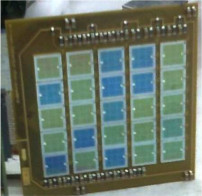
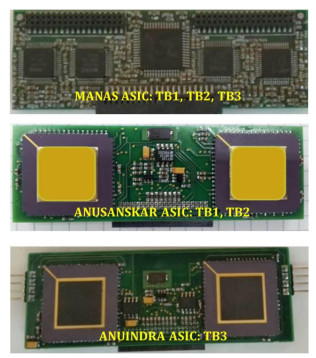
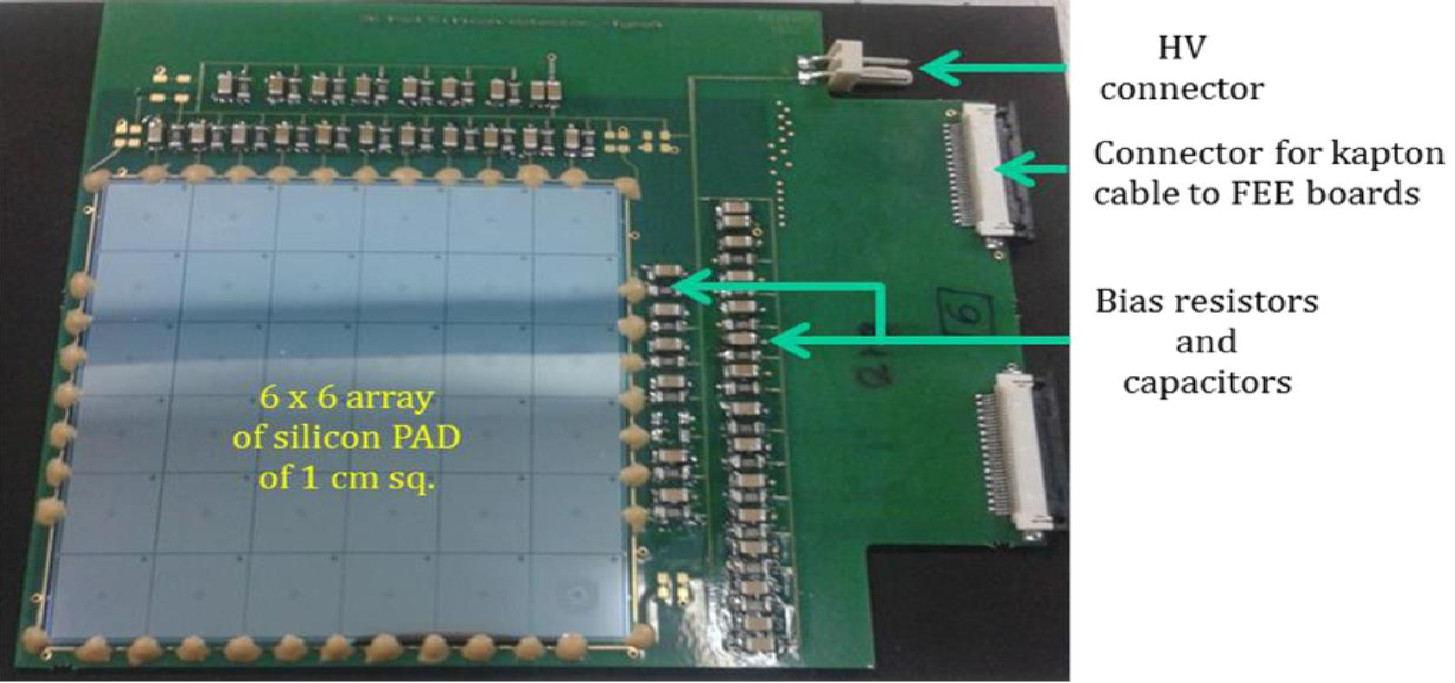
A range of ASICs i.e, MANAS, ANUSANSKAR & ANUINDRA have been used for reading out the detectors that were exposed to pion and electron beam of a range of energy (5→120 GeV).
| Specification | MANAS | ANUSANSKAR | ANUINDRA |
|---|---|---|---|
| Dynamic range | +500 fC to -300 fC | \(\pm\)600 fC | + 2.6 pC |
| Conversion gain | 3.2 mV/fC | 3.3 mV/fC | 1.25 mV/fC |
| Peaking time | 1.2 \(\mu\)s | 1.2 \(\mu\)s | 1.2 \(\mu\)s |
| Baseline recovery | \(\sim 1\) % within 5 \(\mu\)s | \(\sim 1\) % within 4 \(\mu\)s | \(\sim 1\) % within 5 \(\mu\)s |
| Noise at 0pF | 500 electron | 390 electron | 700 electron |
| Noise slope | 11.6 electron/pF | 7 electron/pF | 15 electron/pF |
| Power supply | \(\pm\)2.5 V | \(\pm\)2.5 V | +5 V/GND |
| Power consumption | \(\sim 9\) mW/Ch | \(\sim 15\) mW/Ch | \(\sim 25\) mW/Ch |
| Readout speed | 1 MHz | 1 MHz | 1 MHz |
| Die Area | \(\sim 4.6\) mm \(\times\) \(2.4\) mm | \(\sim 4.6\) mm \(\times\) \(4.6\) mm | \(\sim 5.6\) mm \(\times\) \(5.3\) mm |
| Packages | TQFP 48 | CLCC 64 | CLCC 64 |
| Technology | 1.2 \(\mu\)m CMOS | 0.7 \(\mu\)m CMOS | 0.35 \(\mu\)m CMOS |
Testing at laboratory and at CERN
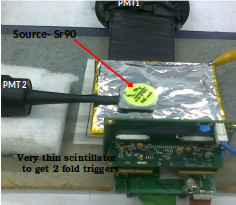

Some results
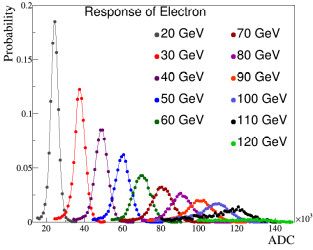
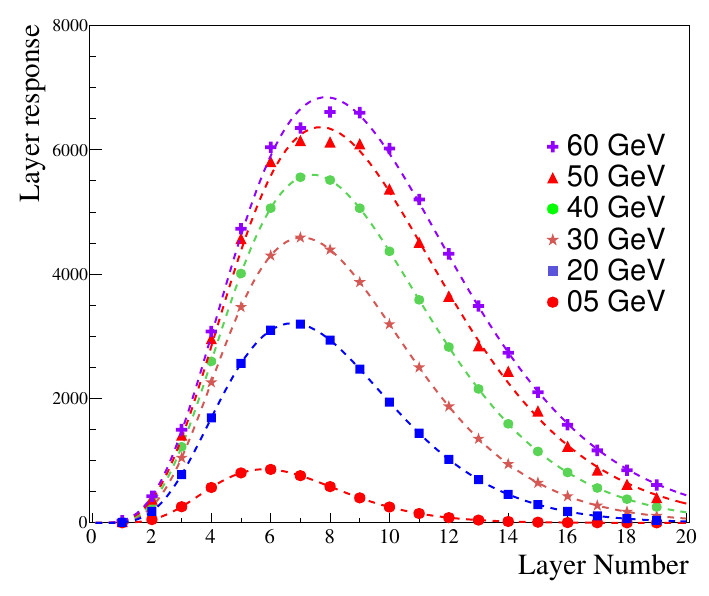
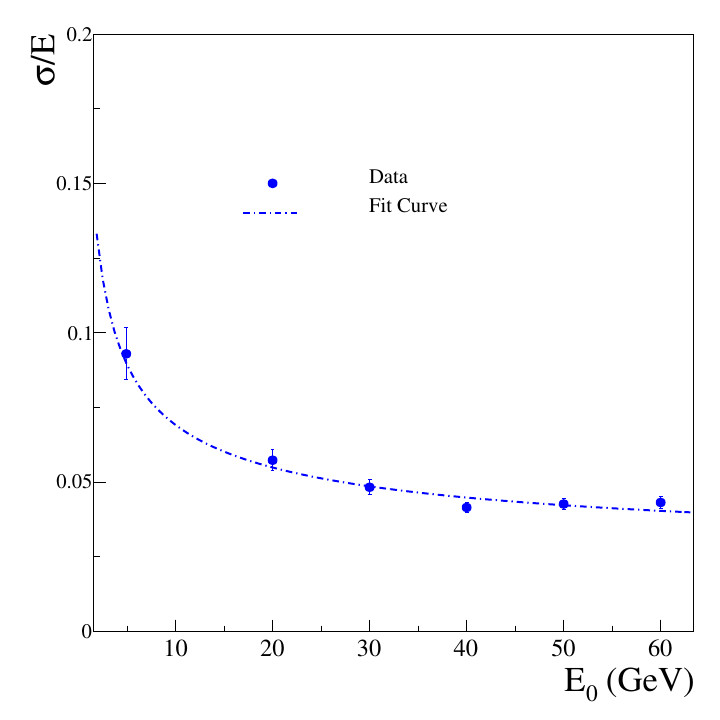

References
- Fabrication and beam test of a silicon-tungsten electromagnetic calorimeter, 2020 JINST 15
P03015
https://iopscience.iop.org/article/10.1088/1748-0221/15/03/P03015 - Test and characterization of a prototype silicon–tungsten electromagnetic calorimeter, Nucl.
Instrum. Meth. A 764 (2014) 24-29
https://doi.org/10.1016/j.nima.2014.07.019
Simulations for the FOCAL: Letter of Intent
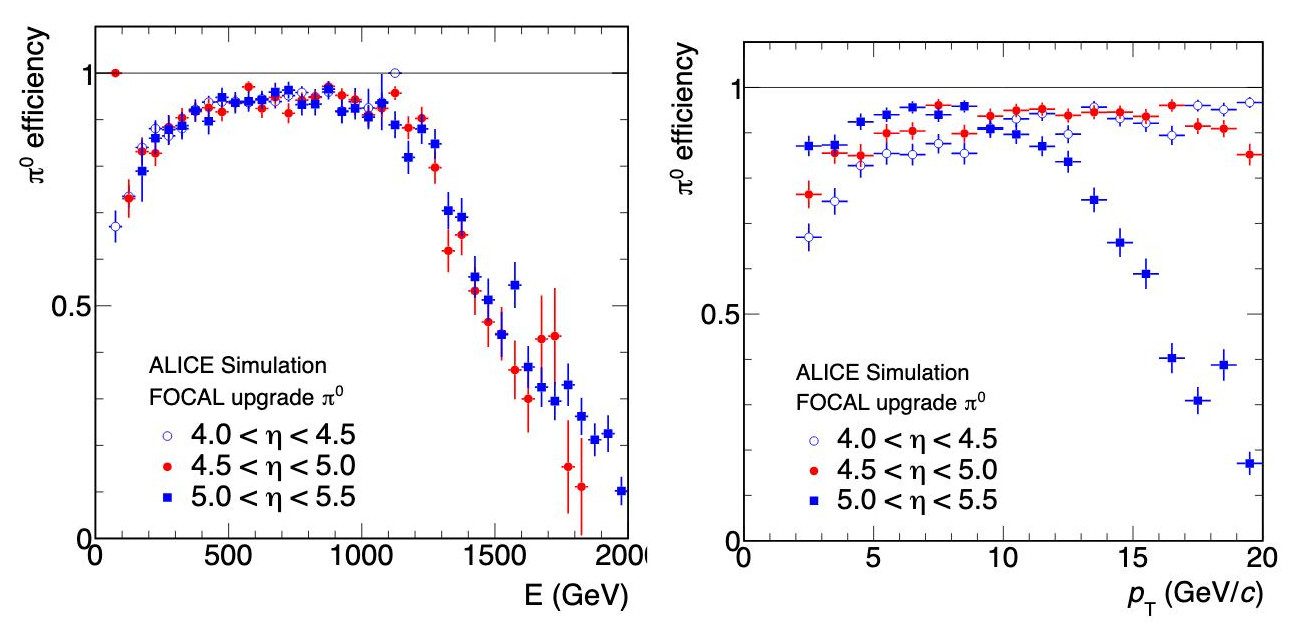
Reconstruction efficiency for neutral pions as a function of energy \(E\) (left panel) and transverse momentum \(p_T\) (right panel), for three different pseudorapity intervals for the realistic Run-4 setup.